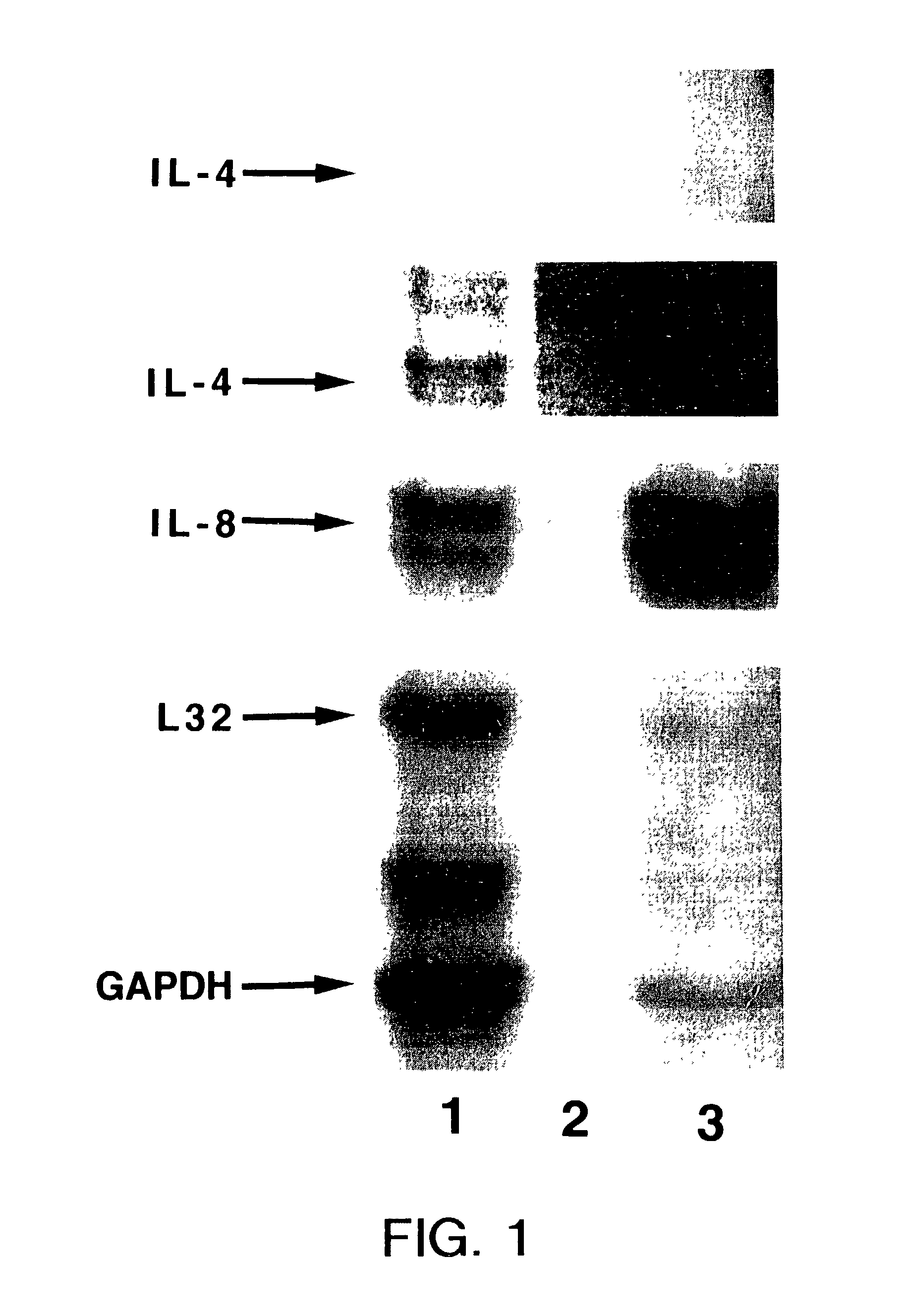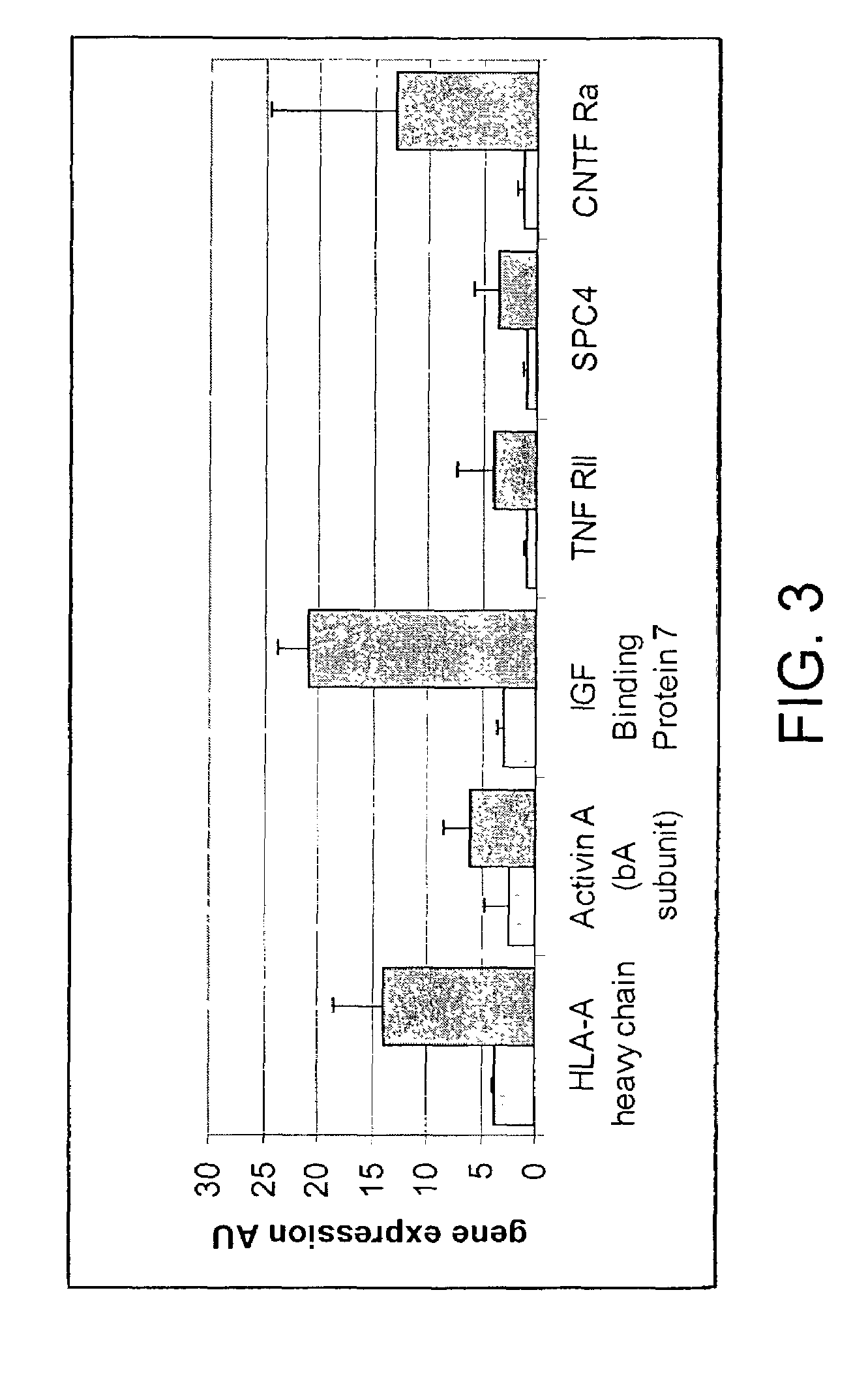Method for detection of melanoma
a detection method and technology for melanoma, applied in the field of melanoma patients, can solve the problems of no approved therapy for patients with intermediate risk of relapse, no cure, and high cost of excised lesions for the publi
- Summary
- Abstract
- Description
- Claims
- Application Information
AI Technical Summary
Benefits of technology
Problems solved by technology
Method used
Image
Examples
example 1
Non-Invasive Recovery of Sub-Stratum Corneum Cells
A. Recovery Using a Rigid Surface
[0125]Skin cells can be recovered non-invasively by scraping the skin with a sterile #15 scalpel. The scalpel is held at an angle approximately 15 degrees from horizontal and repeatedly but gently scraped across an area of skin that is approximately 1×1 cm in size. The epidermal cells are transferred to a sterile tissue culture well by scraping the blade against the interior wall of the well. When the glistening epidermal layer is reached, the scraping is stopped prior to causing any bleeding, to avoid contaminating the scraping(s) with blood. The cells are deposited in a sterile 1 cm petri dish and about 300 ml of lysis buffer is added to the culture well. The lysis buffer is pipetted up and down until the epidermal cells are completely lysed.
[0126]RNA lysis buffer is added within 10 minutes of initiation of the scraping. The sterile tissue culture well is maintained on dry ice. The cells are dissolv...
example 2
Analysis Of Cells Obtained By Tape Stripping
[0130]Irritant contact dermatitis (ICD) was induced by applying 0.5% sodium lauryl sulfate (SLS) in distilled water for 72 hours to the upper arm. After this exposure, the erythema was graded according to standard scoring sales (Fisher's Contact Dermatitis. 4th ed. Rietschel, R. L. and Fowler, J. F. Jr. eds. Williams & Wilkins, Baltimore, 1995, pg. 29). Allergic contact dermatitis (ACD) was induced by applying dibutyl squarate in acetone to the upper arm of the same subject under occlusion for 48 hours. The upper arms of the same individual (subject #1) were tape stripped 12 times and processed as described in Example 2 above.
[0131]FIG. 1, lane 1 shows the RNA isolated from an ACD erythematous area of skin, read clinically as 3+erythema, that was induced by squarate. Lane 3 is the RNA from ICD erythematous skin, clinically scored as 2+erythema, induced after exposure to 0.5% SLS. After exposure of the x-ray film, the band for cytokine IL-4...
example 3
[0138]To further examine the relationship between the cytokines and the degree of inflammation in subject numbers 3-5, the IL-4, IL-8 and IL-13 RNA levels were normalized to the corresponding housekeeping gene levels (Table 3). Among the three subjects analyzed, a correlation exists between the RNA levels and the severity of the reactions. Table 2 shows that the samples from the strongest skin reactions were also the ones that demonstrated the largest relative amount of IL-8 in the ACD reaction. For example, subject #4 with a 2+reaction at the ACD site and only a slight (low+1) reaction at the ICD site showed an approximate two fold difference in the IL-8 / GAPDH ratios when comparing the ICD and ACD reactions using the RPA method described above. In addition, one would predict an ACD reaction if, on the gel, there is a band for IL-4 and a value for IL-4 / GAPDH of about 0.001 or higher. Also, an ACD reaction can be confirmed where there is an IL-13 band with an IL-13 / GAPDH value of abo...
PUM
| Property | Measurement | Unit |
|---|---|---|
| Level | aaaaa | aaaaa |
Abstract
Description
Claims
Application Information
 Login to View More
Login to View More - R&D
- Intellectual Property
- Life Sciences
- Materials
- Tech Scout
- Unparalleled Data Quality
- Higher Quality Content
- 60% Fewer Hallucinations
Browse by: Latest US Patents, China's latest patents, Technical Efficacy Thesaurus, Application Domain, Technology Topic, Popular Technical Reports.
© 2025 PatSnap. All rights reserved.Legal|Privacy policy|Modern Slavery Act Transparency Statement|Sitemap|About US| Contact US: help@patsnap.com



